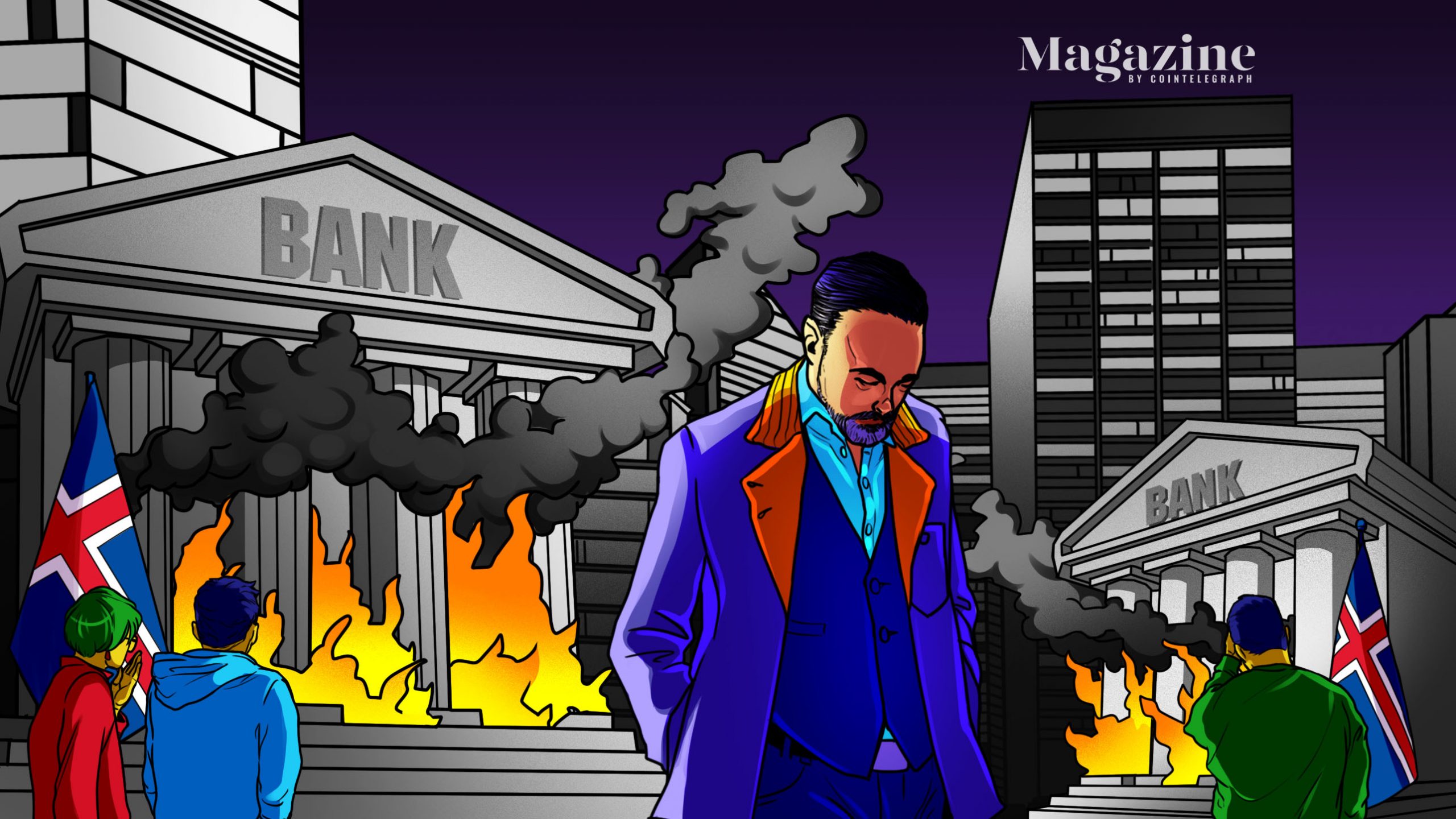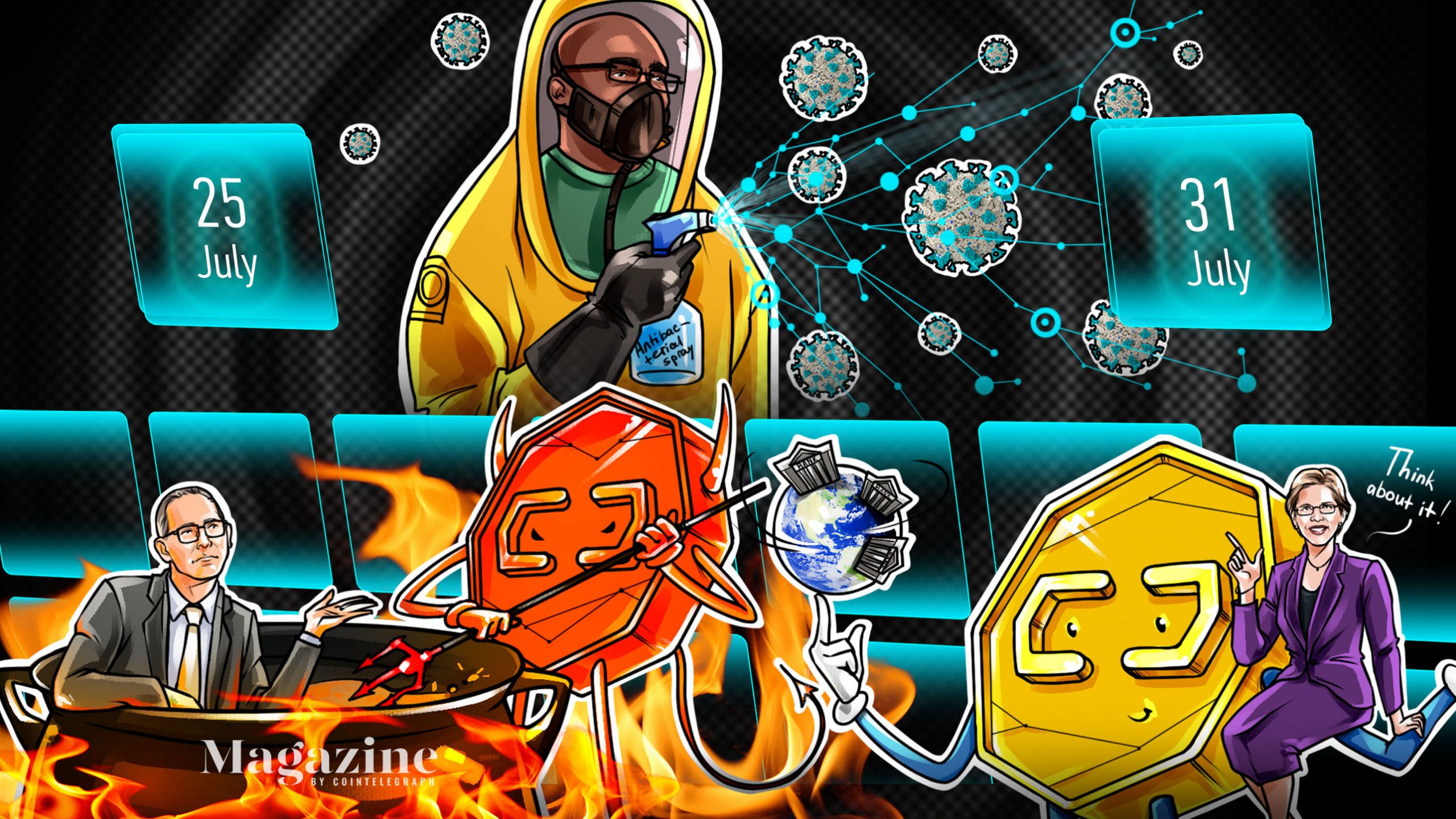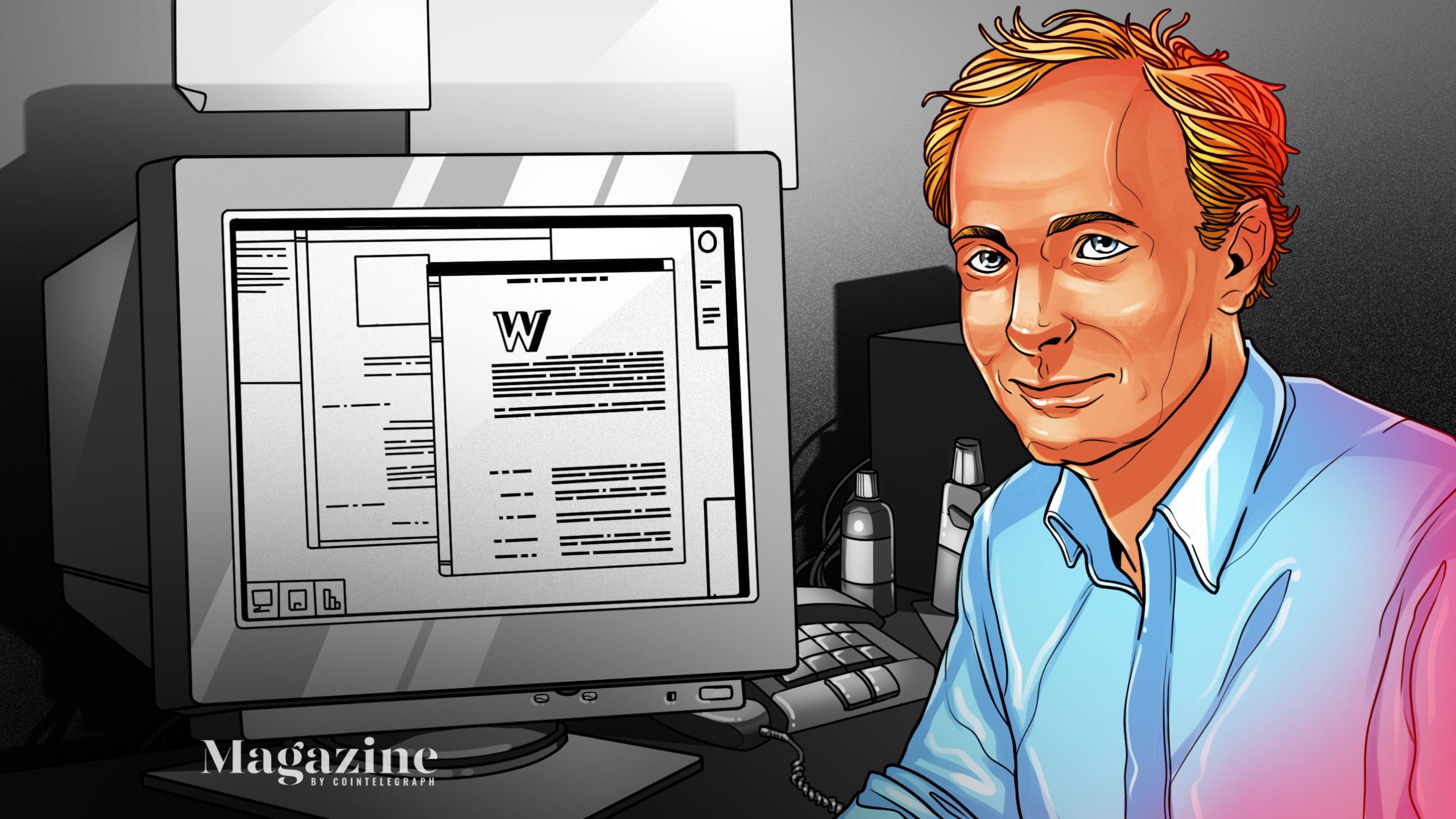
Many Bitcoiners look forward to the day in the future when the banking system collapses and hyper-Bitcoinization occurs.But Jared Bibler — an American who experienced the most dramatic banking and share market collapse in living memory in Iceland in 2008 — says the reality is something no one would ever want to experience.“It’s a deep nausea in the pit of your stomach that does not go away over many months, that feeling of ill-being persists,” he says. “Because it doesn’t happen all in one day. It happens slowly.”Like many in the crypto community today, in the lead up to the crash, Bibler felt as if he was the only one to notice the ever-widening cracks in the financial system. When it finally happened, he admits to a sense of misplaced pride.“I was like, ‘Hey, guys, the crash is happening now! I was trying to warn you about this for a couple years’,” he recalls thinking. “So, I was feeling a bit arrogant or something. But I didn’t realize like, ‘Hey, in two days, pal, you’re going to be worrying if you can buy food.’” 3 October 2008 — a run on the banksProf. Gylfi Magnússon goes on national news at noon, says the banks are bankrupt, we don’t have enough foreign currency for everyday goods. Icelanders respond by withdrawing 5.5 billion ISK in cash, 27x the normal amount for a Friday.— Jared Bibler (@jared_bibler) October 3, 2021 Bibler, who later joined the Fjarmalaeftirlitid (FME) investigation into the collapse, had quit his stressful Wall Street job in 2004 and moved to the tiny country after vacationing there. He ended up working at one of the largest banks, Landsbanki, and in a stroke of bizarre timing, quit his job just days before all three major banks collapsed in October 2008.Each was the size of Enron, and the impact of the collapse on the 350,000 residents has been likened to 300 major banks collapsing in a country the size of the United States. The stock market plunged 97% from its 2007 high and the value of the national currency, the Krona, halved. People began to stockpile goods from supermarkets and many were forced to line up for food aid. Jared Bibler amassed piles of evidence during the investigation. (Supplied) “Imagine if the money that you have in your bank account now would suddenly buy you 1/10th of what it had? That happened in a week. How would you feel? ‘I can’t travel abroad anymore, I can’t buy a car.’”Bibler recalls the head of the central bank warning: “If we don’t get on top of this, we’re looking at 30 years of anarchy in this country. And I think he was right, I think we were a week away from a kind of a Mad Max,” he says.“In the kind of crash that we had with supermarket shelves going bare, and you’re not sure where your next meal is going to come from, and you’re not sure if the money in your wallet can buy anything the next morning, I think you’re pretty close to a real breakdown in society.”Over the months that followed, inflation hit 14% annually, interest rates hit 15% while GDP fell 10% in real terms and plunged the country into a depression. The unemployment rate quintupled. Ranked as the world’s most peaceful nation by the Global Peace Index, things turned ugly.“The mood on the streets of Iceland was vengeful and kind of scary,” he says. “I was a bit afraid of it. People were down in front of the Parliament every day screaming and yelling and banging pots and pans, lighting fires and making noise — really super angry.”But, how did the three major banks in this tiny nation manage to grow their assets to 11 times the size of the economy, to the point where their collapse sent the country to the brink of anarchy? As Bibler details in his new book Iceland’s Secret: The Untold Story of the World’s Biggest Con, it was a mixture of greed, incompetence and outright fraud. Reykjavík is home to 120,000 people and is the capital of Iceland (Pexels) The most peaceful countryIceland is a very unusual place. Despite having just 350,000 people, it has everything a larger nation has including its own government, customs service, share market and industry. For years, the economy was built around fishing and aluminum smelting, but after the banking sector was deregulated in 2001, huge amounts of foreign money poured in. The banks went on a debt-fueled spending spree acquiring foreign real estate, fashion brands and soccer teams.“Suddenly, there was a huge market for Icelandic (debt), especially commercial debt, which was high yielding,” Bibler explains. “And these newly privatized banks, they were hungry to grow, they were super aggressive. So they grew almost like a pumpkin, overnight.”The banks grew 20-fold in the space of just seven years and by the second quarter of 2008, the national debt had grown to 50 billion euro, equating to 160,000 euro worth of debt for every man, woman and child.With the economy booming and the stock market jumping up to 4% a month, no one paid much mind to warning shots fired in ominous 2006 reports from the IMF and Merrill Lynch.“It had been the poorest country in Europe for like 1000 years,” he says. “And I think people were like now we’ve made it, it’s okay while the sun shines.” A most peculiar bankJared Bibler hard at work. (Supplied)While he’d been drawn to the laid-back attitude and values, he was horrified by the incompetence and laissez-faire attitude of his coworkers and Landsbanki.The whole place ran on manual data entry and few understood even basic concepts like T+3 settlements (settling a securities trade within three days).“Internally, my view was it was kind of a complete chaos,” he says. Bibler was asked to look after a 200 million euro hedge fund, even though the bank didn’t have any way to track the amount of cash the fund held on any given day. “The only way we could do that is to create an Excel spreadsheet, and then go and look up in five or six places and copy-paste these numbers,” he explains.In another incident, he recalls the sales guys using find and replace to change all the references from Icelandic Krona to Euros in a fund brochure to attract German investors, despite the fact the only reason it made high returns was because it used Krona. “It was just the Wild West.”The last straw was when he was instructed by his manager to wire 5 million euro to an unknown bank account with no documentation on three separate occasions.“As soon as I did it, within a few days, they asked to send another five and then another five. So altogether, we sent 15 (million euro) with no documentation to some random account in Norway.”When he heard second hand that his manager’s boss had started asking questions about the unusual transfers and that his manager had blamed him, Bibler decided to quit.“My last day was Friday, October 3, and my bank collapsed the next Tuesday, the seventh.” 3 October 2008 /6IMF calls Iceland: we want to send a team there next week.Meanwhile Kaupþing transfers ISK 10B ($88m) offshore to Marple.And I work my final day at Landsbanki — the day of the cakes.— Jared Bibler (@jared_bibler) October 3, 2021 The crisis unfoldsIn mid-September 2008, the financial world was shocked by rapidly spreading contagion in financial markets. On Sept. 15, Lehman Brothers — the fourth-largest Wall Street bank — collapsed along with old school stockbroker Merrill Lynch. The next day, U.S. insurance giant AIG went under, the following day the largest U.S. mortgage lender HBOS fell. Iceland’s banks toppled like dominos: Glitner on Oct. 6, Landsbanki on Oct. 7 and Kaupping on Oct. 9. In a single week, 90 percent of the financial sector defaulted, and, unsurprisingly, there was a run on the banks with 20 times the normal amounts withdrawn. With the krona dropping like a stone, Bibler made an emergency trip to France to get as many euros from ATMs in cash as possible.Quitting his job days before the collapse meant he wasn’t eligible for social security payments and his savings were tied up in a high-interest fund that was frozen. It took six months to regain access to the money.“So we just didn’t even have access to the cash that we thought we had even in the local currency. So I only had maybe, in my regular bank account, maybe like 1000 bucks worth of local currency. So that was super scary.”In Iceland, the principle in a mortgage is adjusted upward with inflation, which saw the 20% equity he’s built up in his home with partner Hulda becoming worth less than nothing. “Suddenly, that 80% loan value was now 110% or 120%,” he says, adding that they were forced to find someone willing to take over the house and mortgage for nothing. “We just gave them both. We handed them the keys, the house, the mortgage — they took the whole thing.”In the book, Bibler describes being so poor they resorted to eating bjugur – horse-meat sausages boiled in water.“Once done, I tried to smile at her across the dinner table but the smell, the taste and especially the texture of the giant white gobs of horse fat that popped out of the sliced casing were too much. For me, this is the sign that we have hit the bottom of the barrel.” Iceland offers amazing views of the Northern Lights and runs on almost 100% geothermal and hydro power. (Source: Pexels) The investigationAfter six months of unemployment, he found a job on a team of 16 at financial supervisory authority FME, investigating the collapse. He spent the next two years following a trail of excel spreadsheets to piece together what had happened. Along with his time at the Office of the Special Prosecutor in Reykjavík, he and his team investigated 30 criminal cases. It soon became clear that the banks had been engaged in massive market fraud for a decade or so. All three were buying their own shares on the stock market to prop up the price. On many days, they were the largest buyer in the market. Kaupping, the largest bank, bought $1.25 billion worth of its own shares in the year before it collapsed. Its market cap was only $5B.“I was shocked. I didn’t believe it. I didn’t want to believe it,” he says.“When I just saw these guys going in every day, buying up like literally sometimes 100% of the daily trading volume… and then going back years and seeing that behavior, this kind of shook my worldview quite a bit.”To hide the enormous piles of shares, the banks created fake shell companies which they then lent even more money to, to purchase the shares.“It was a brilliant scam really, as long as they continued to borrow money from abroad and grow, they could continue to buy their own shares to keep the price set really wherever they liked.”The collapse became a major international incident due to the large amounts of foreign investment in Iceland. Around 300,000 people in the United Kingdom were affected, with U.K. local councils alone tipping in 840 million pounds. The U.K. government applied terrorism provisions to recoup billions.Sadly, but predictably, given how small Iceland is and how well connected the architects of the schemes were, there wasn’t much appetite to bring the culprits to justice. By 2011, Bibler’s staff had been cut to just three people. The Icelandic general counsel told him:“We don’t need you or this kind of team anymore. Don’t be naïve, the financial crime that happened here, that was all back in 2008. It won’t ever happen again.”Bibler quit. Justice deniedHe’d naively expected the traders responsible would face long jail periods as he assumed the maximum six-year penalty would apply for each incident.“I’m like these poor guys were doing this market abuse like 50 trades a day, 220 trading days a year and five years, I was thinking multiply each one of those by six years and they’re gonna be in prison for 1000 years or something.”He was astonished to find prosecutors that thousands of incidents would be covered by a single charge — with a maximum penalty of a handful of years for the lot. Bibler believes the punishments handed out were not enough to act as a deterrent. (Supplied) The Kaupping prosecution was typical of the trials. Nine executives were charged with market abuse and the evidence clearly showed they were guilty of buying up 42% of all volume in its own shares in Iceland between 2007 and 2008 and 31% of the volume in Sweden.Despite the scale of the crimes, and the fact 30,000 bank investors were wiped out, just seven of the nine were convicted in 2015 in the Reykjavik District Court and received sentences ranging between zero jail and four and a half years.All told 29 men and two women — CEOs and execs from the three big banks and related institutions — were sentenced to a combined total of 99 years in prison. That works out to an average of 3.2 years each person for crimes ranging from insider trading to market manipulation.Most were released within a year after serving time in Iceland’s spectacular white collar prison at Kviabryggja. Bibler writes:“Through changes in the law, already short sentences became comically short — and within mere months, they were back to flying helicopters and dining out with their spouses at the best restaurants in Reykjavik.” Iceland’s Prime Minister was also found guilty of negligence by a special court, but was spared prison. He later became Iceland’s ambassador to the United States. Bibler doesn’t believe the punishments fit the crimes.“I don’t get excited about putting people in jail. You know, I’m not into punishing people. But at the same time, the message that that sends is horrible.” Jared Bibler has written a book about the fallout from the GFC on Iceland. Bitcoin emergesBitcoin emerged not long after the collapse of Iceland’s banking industry, and cryptocurrency mining became a sizable industry thanks to dirt cheap rent and 100% renewable energy from geothermal and hydroelectricity. By some accounts, 8% of all Bitcoin has been mined in Iceland.Bibler thinks it’s too early to tell if the radical transparency of blockchains can help mitigate against corruption.“I think crypto is really in its infancy. I don’t know what it’s going to lead to. But I think there’s a lot of fascinating ideas and developments that will come out that I think we can’t predict. We’re in the era like when Netscape went public in 1994.”“I think there’s something there, but I’m not sure what it is yet,” he adds.But he is sure another collapse is coming. He concludes the book with a warning that Iceland’s financial collapse was the result of turning a blind eye to corruption to keep the financial machine pumping out money. He concludes the book by writing:“Despite the devastating events of 2008 the dragon of deeply corrupt financial markets has still not been slain… Iceland in 2004-08 is a preview of coming attractions for the world’s big markets. Today we find ourselves back in the equivalent of the 1930s thinking the Great War is over and done with… We naively refer to 2008 as the Global Financial Crisis as if there will only ever be one, when GFC II almost certainly looms on the horizon. We are sitting on a time bomb.”Just before we finish up the interview, we share a joke that the looming financial collapse might see us both eating horse meat sausages again.“Oh Jesus, I hope not,” he laughs. “One time in my life was enough.” ICELAND’S SECRET: The Untold Story Of the World’s Biggest Con is out October 5.
Iceland 2008 firsthand – Cointelegraph Magazine




